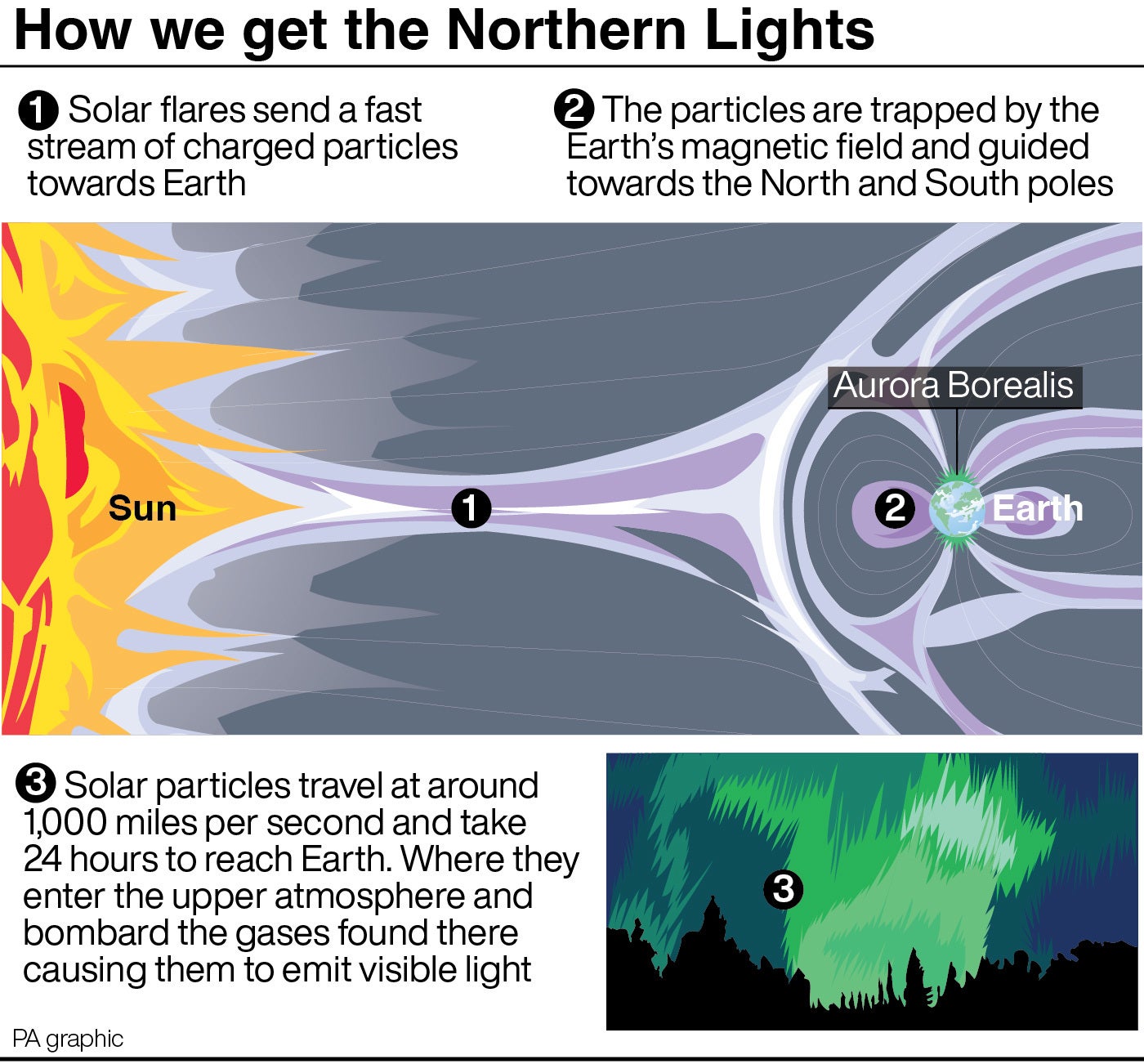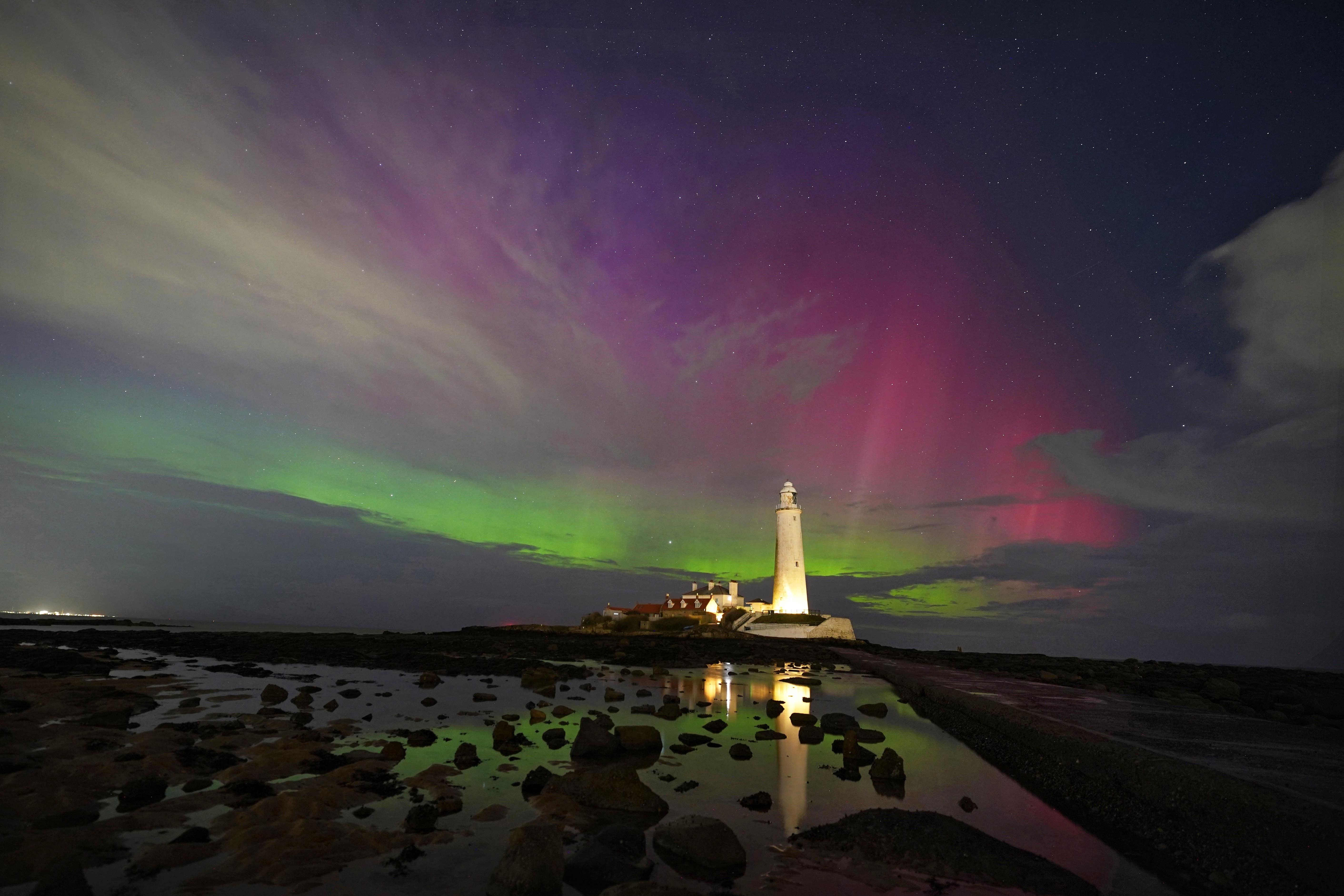Northern Lights may be visible over the UK tonight

Subscribe For Free Global Morning News Updates
Subscribe To Our Free Morning Headlines Email
Subscribe To Our Free Morning Headlines Email
Residents of the UK will have the opportunity to witness the Northern Lights once more on Monday and Tuesday as this stunning natural display makes a comeback.

The northern lights, or aurora borealis, occur when energized particles interact with the gases in Earth's atmosphere near the magnetic poles. This interaction produces light in different wavelengths, creating a colorful display in the sky.
The particles typically originate from solar flares, which are explosions on the sun, or from ejections of gas from the sun.
The color emitted varies based on the type of gas that the charged particles are energizing. For example, nitrogen, which is the most plentiful gas on Earth, gives off purple, blue, and pink light, while oxygen emits a green hue.
According to the Met Office, some areas in the UK could see the night sky lit up on Monday night and into early Tuesday morning.
The lights, commonly referred to as the aurora borealis, are expected to be seen in places with clear skies, such as Scotland and Northern Ireland, as well as the northern regions of England and Wales, according to the weather forecaster.
The Met Office also mentioned in a post on X that there could be opportunities to see them further south.
If you're looking to catch a glimpse of the aurora, meteorologists recommend avoiding places with lots of artificial light. They also suggest using a long exposure camera, which can capture a wider range of wavelengths compared to what the human eye can see.

According to Andrea Bishop from the Met Office, “We anticipate that the auroras will reach their highest intensity on Monday due to the expected arrival of a coronal mass ejection.”
"In the UK, this time is anticipated to align with daylight."
The aftereffects are expected to continue into Monday night and early Tuesday morning. This means the aurora will probably be visible in areas with clear skies, particularly in Scotland and Northern Ireland, as well as some northern regions of England and Wales.
"We can't say exactly how far south the coronal mass ejection will be visible or identify specific cities where it can be seen. However, for tonight, the skies are expected to be mostly clear in many areas. That said, the Northern Isles and western Scotland will likely experience more clouds along with some light rain and drizzles. Northern Ireland will also have cloudier conditions."
"There will be some scattered clouds for certain areas in the South East and East Anglia."
The optimal locations for viewing are wide, secluded spaces that offer a clear sight of the northern sky. The lights will probably not be visible until it’s quite dark outside.
Auroras happen when charged particles clash with gases in the Earth’s atmosphere near the magnetic poles.
When they come together, they produce light at different wavelengths, resulting in vibrant colors illuminating the sky.
In the northern part of the world, a lot of this action happens in an area called the aurora oval, which spans latitudes from 60 to 75 degrees.
When activity is intense, it spreads out over a larger region, which is why people sometimes catch sight of displays as far south as the UK.
This year, there have been plenty of chances to witness the stunning light shows across the UK. In May, July, and August, impressive displays illuminated the skies from the Highlands all the way down to Cornwall.
In May, Krista Hammond, a space weather forecaster at the Met Office, explained that the sun experiences an approximate 11-year activity cycle. This cycle begins at a point called solar minimum, progresses to solar maximum, and then returns to solar minimum. Currently, we are nearing the period of solar maximum.









































